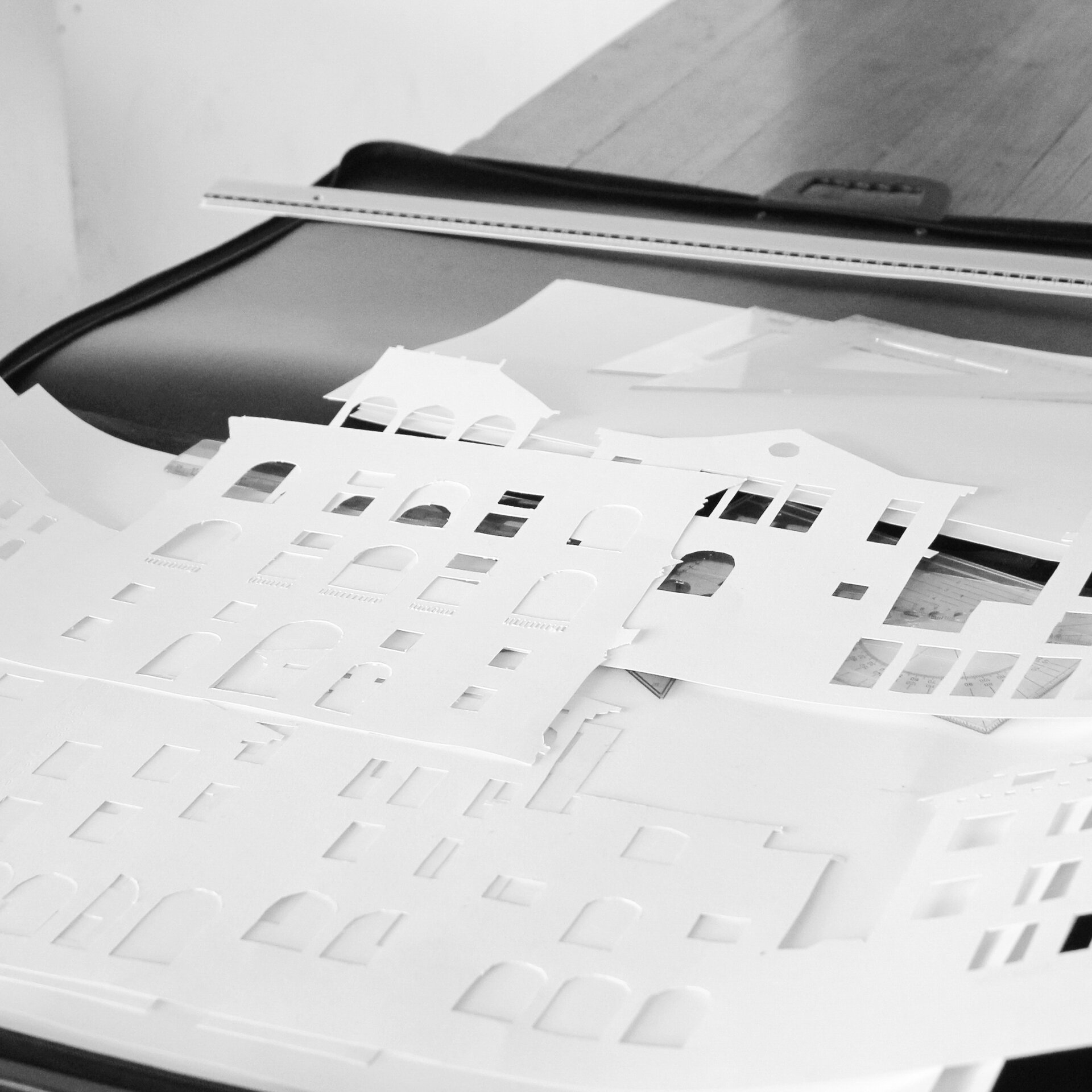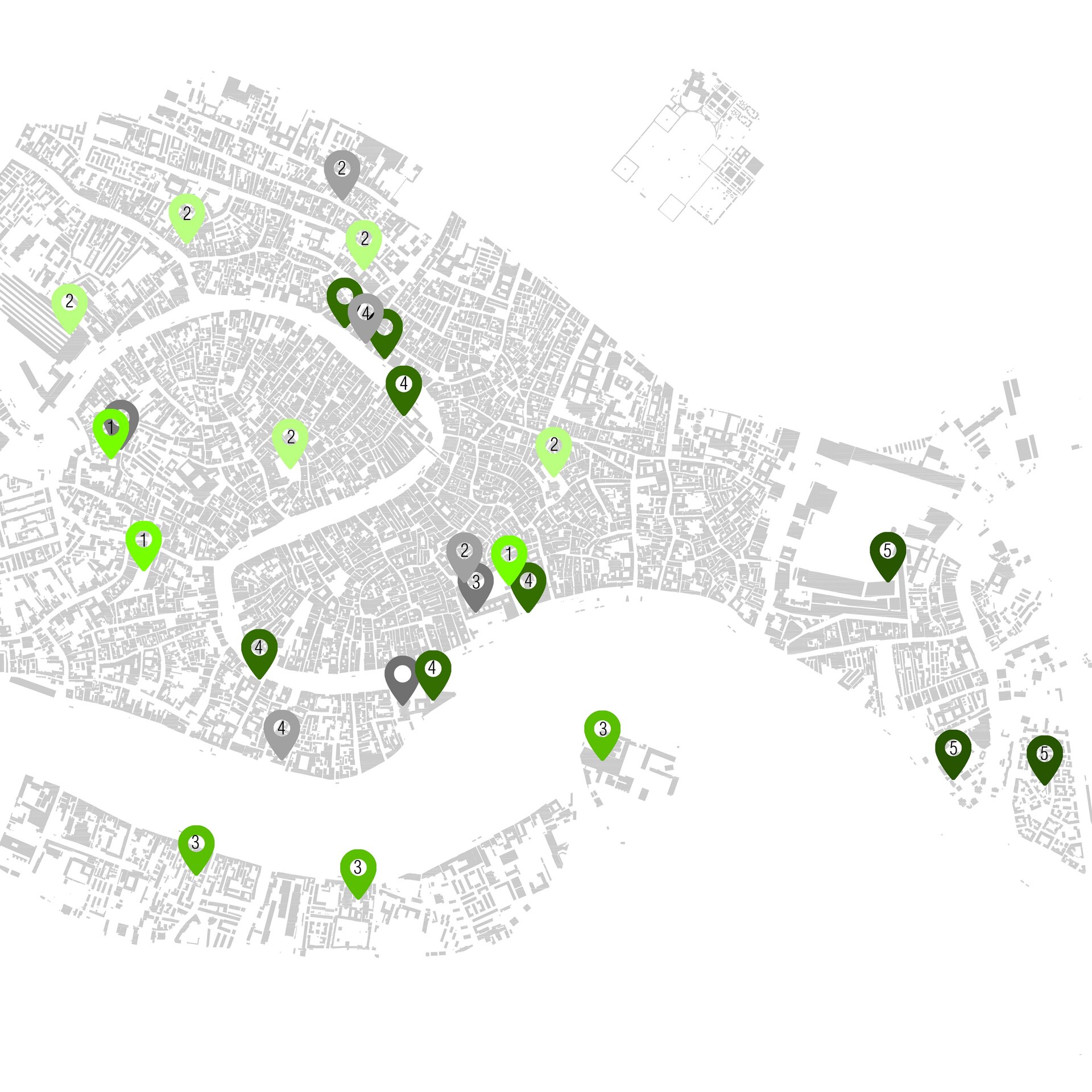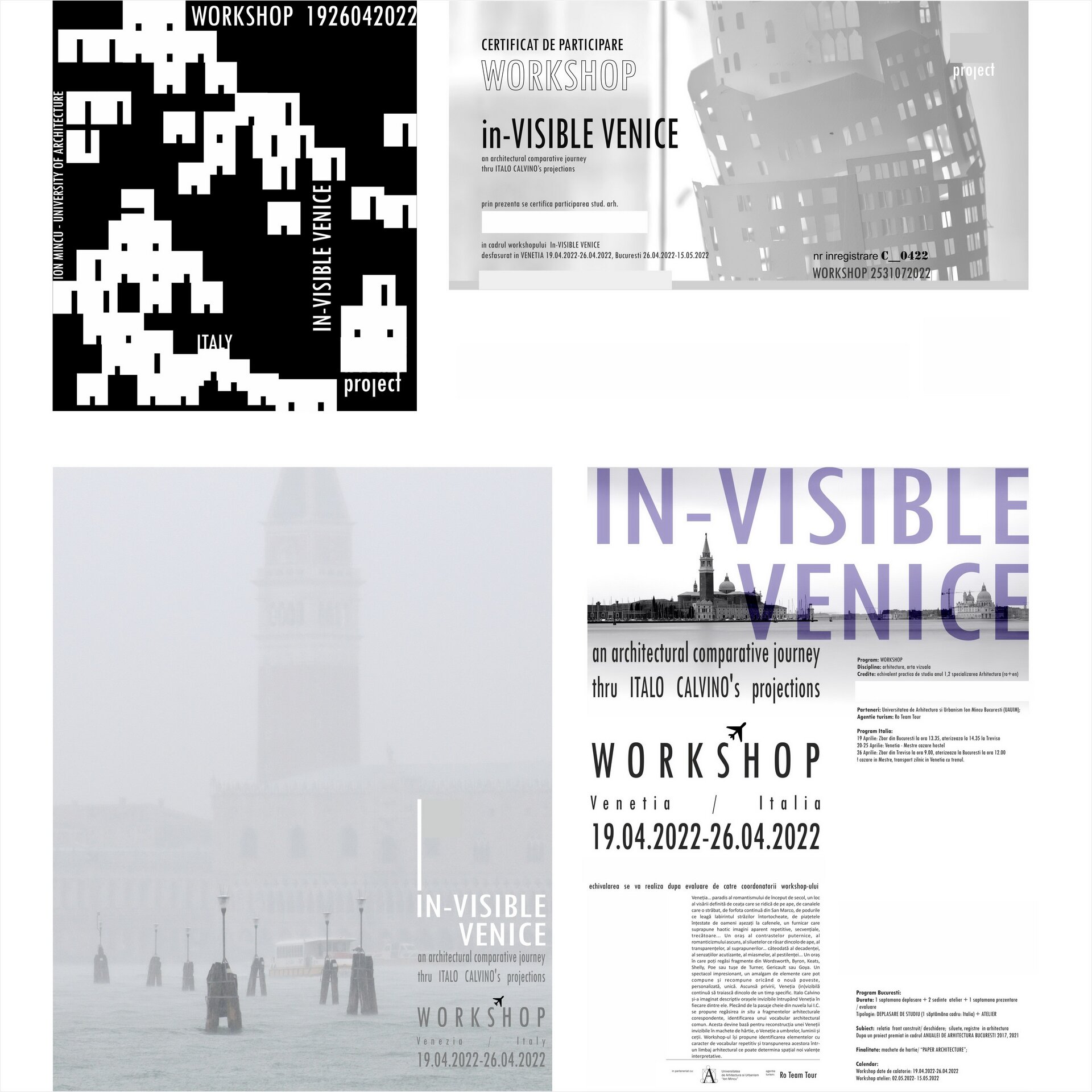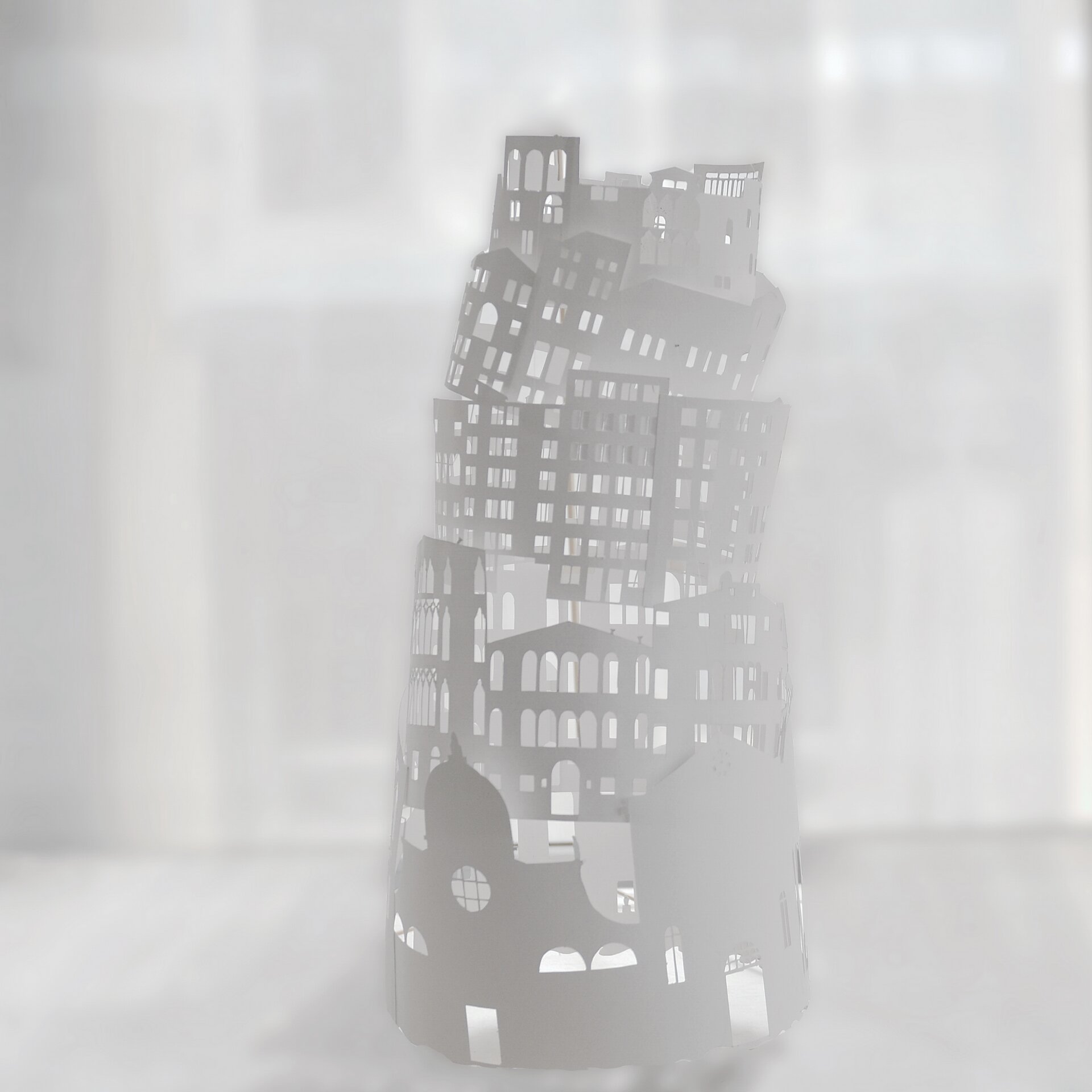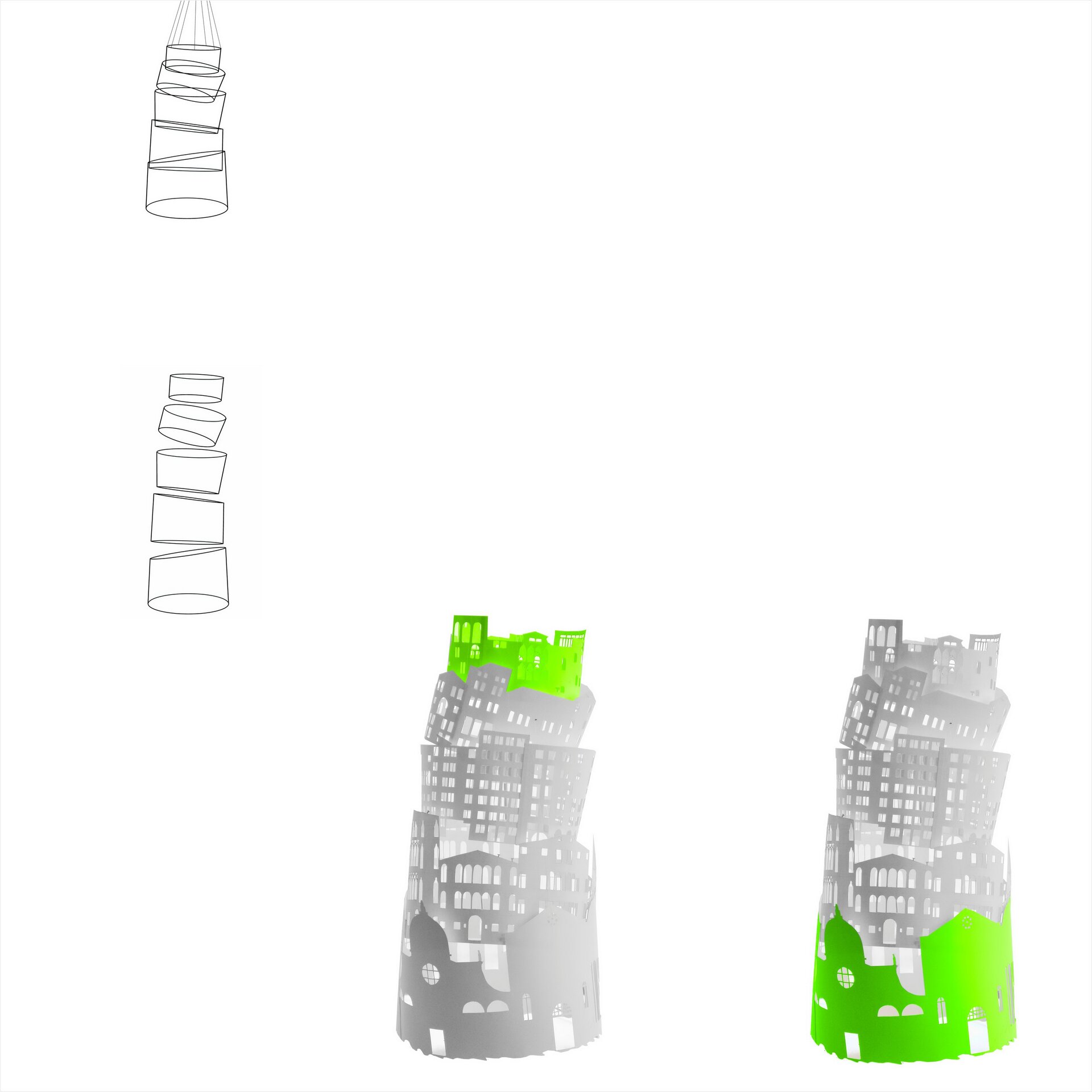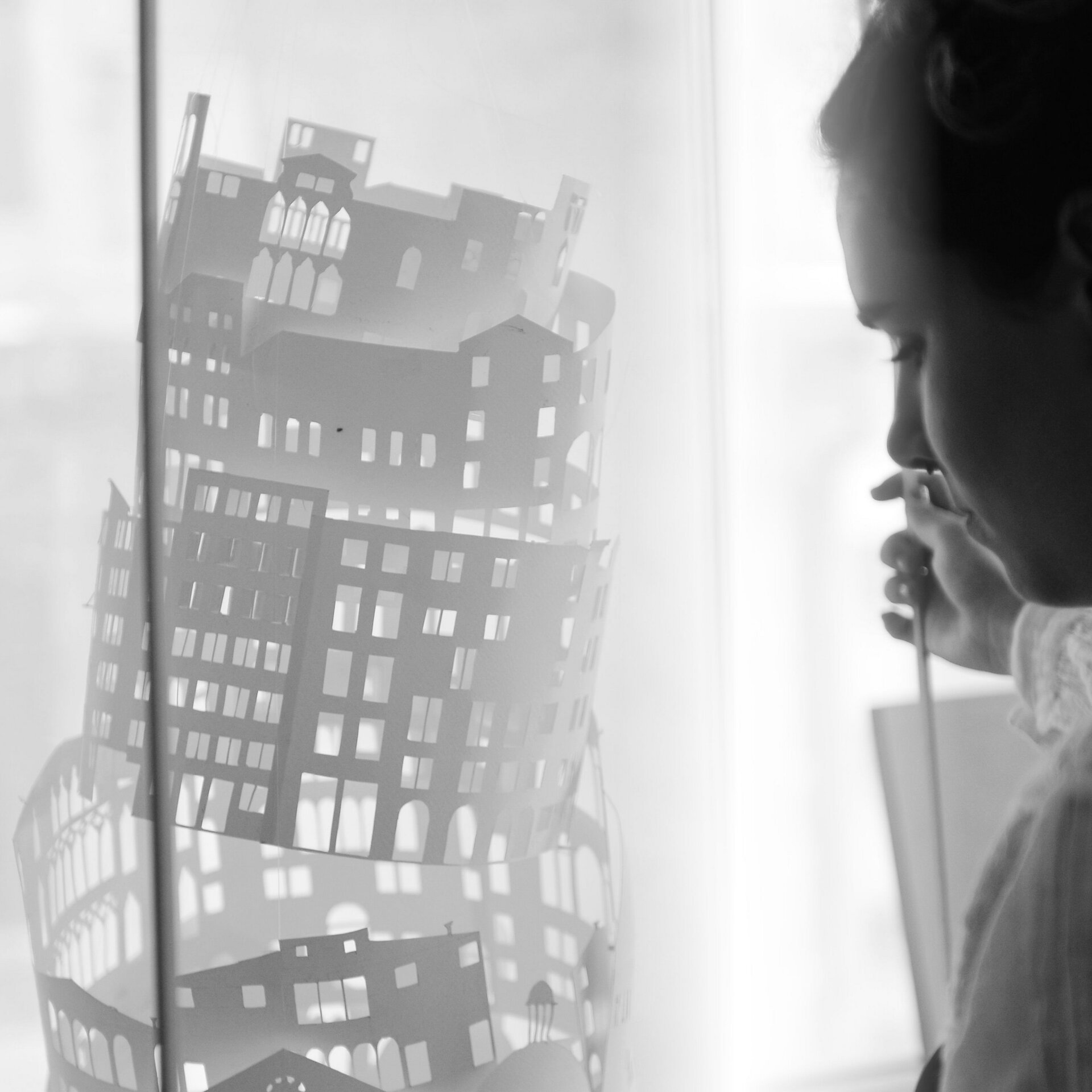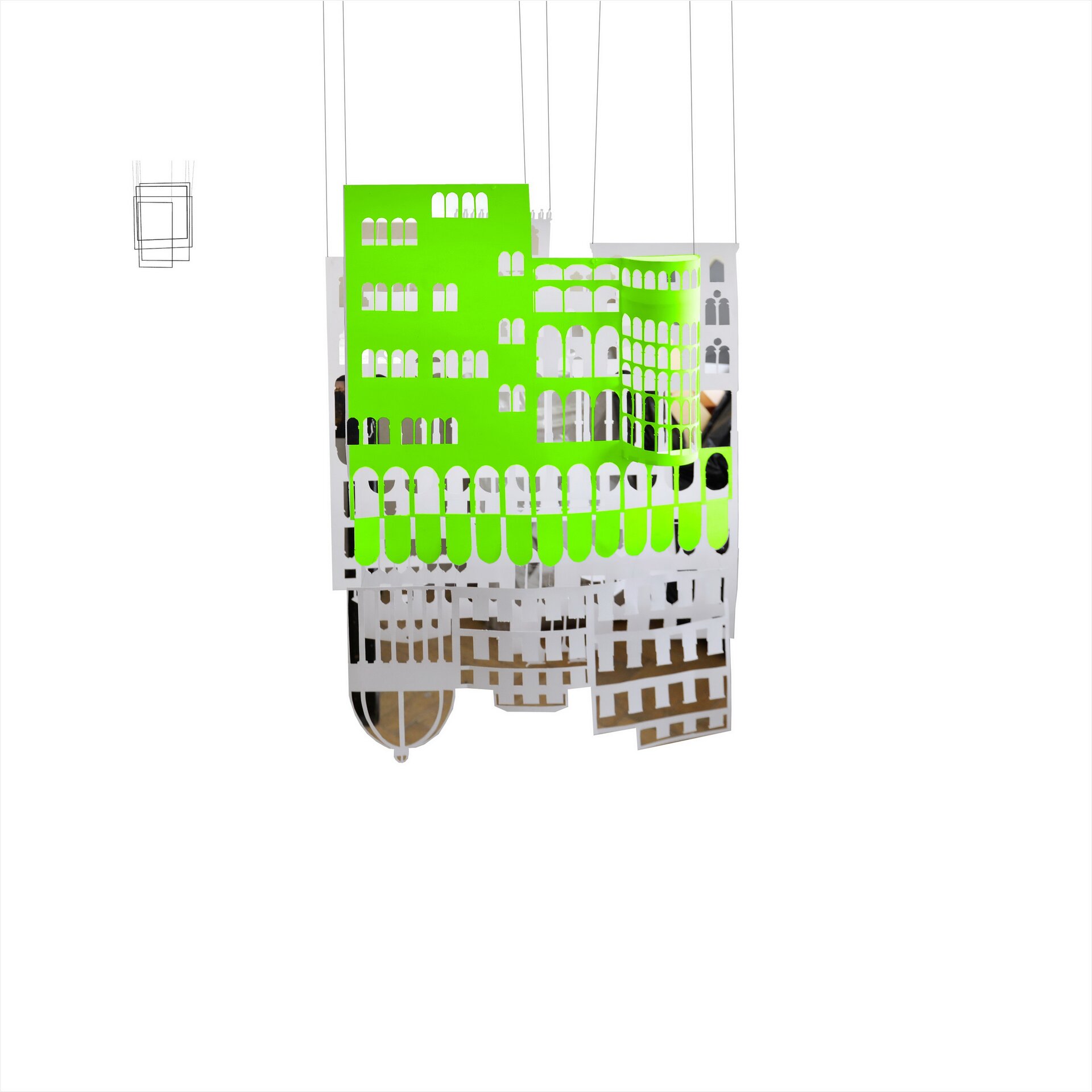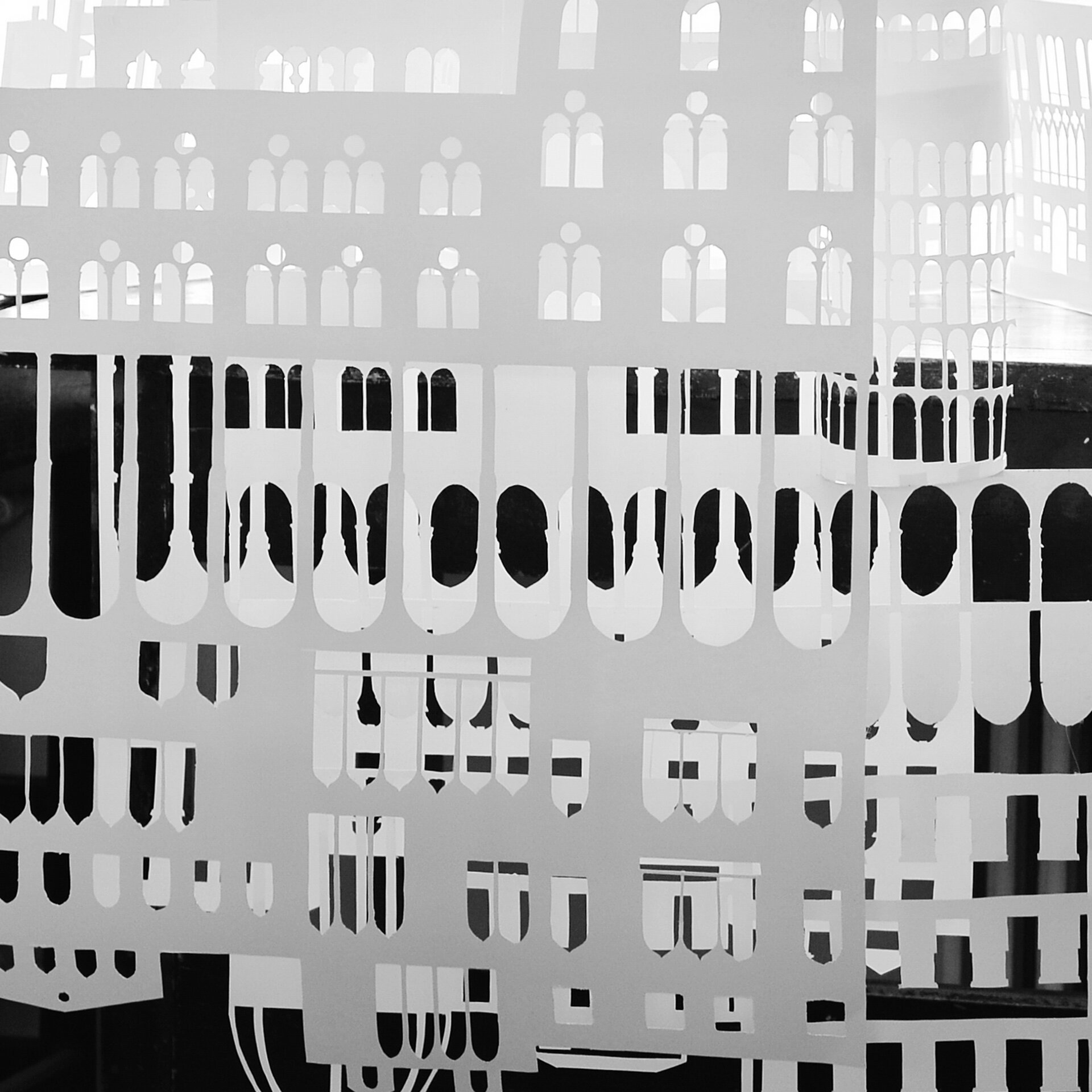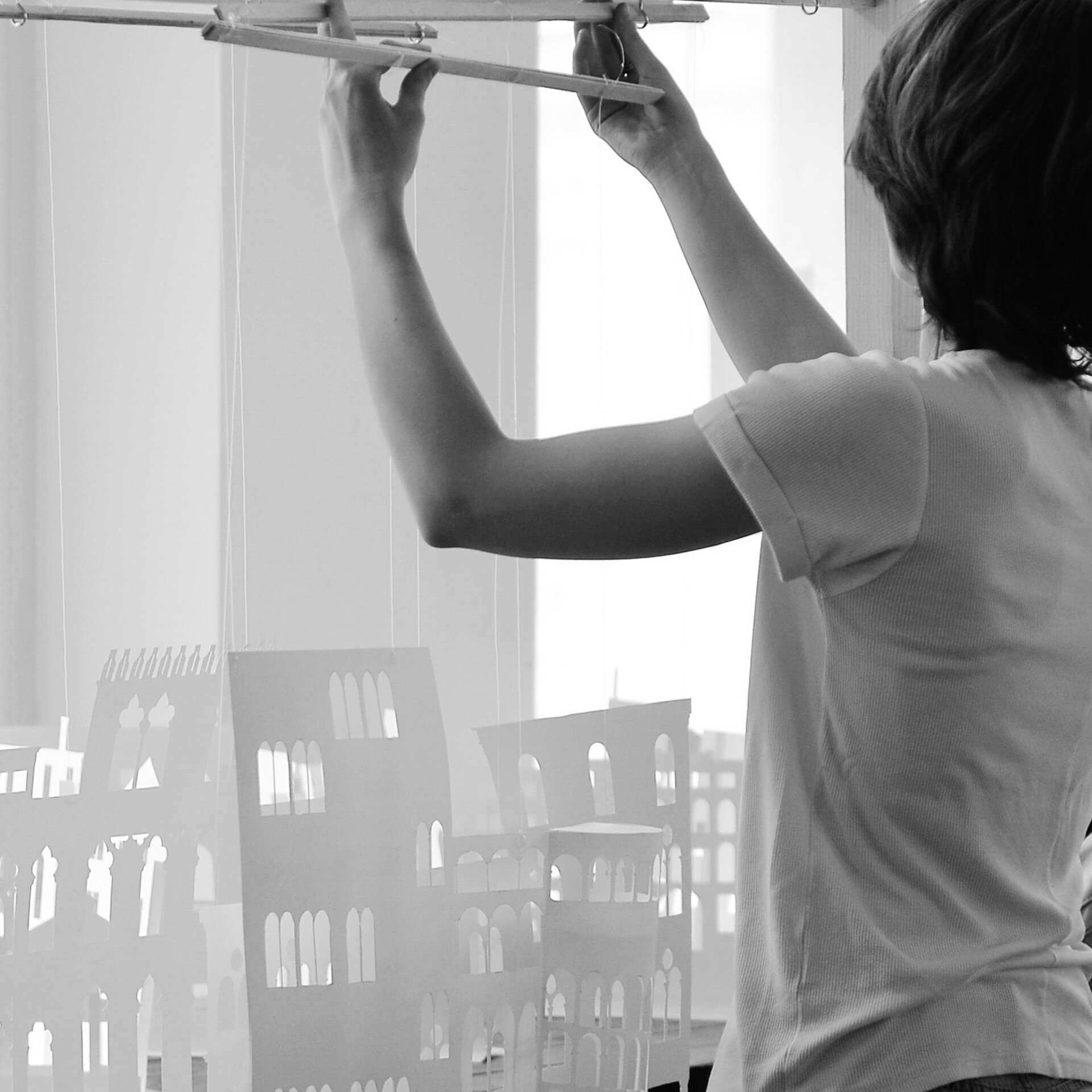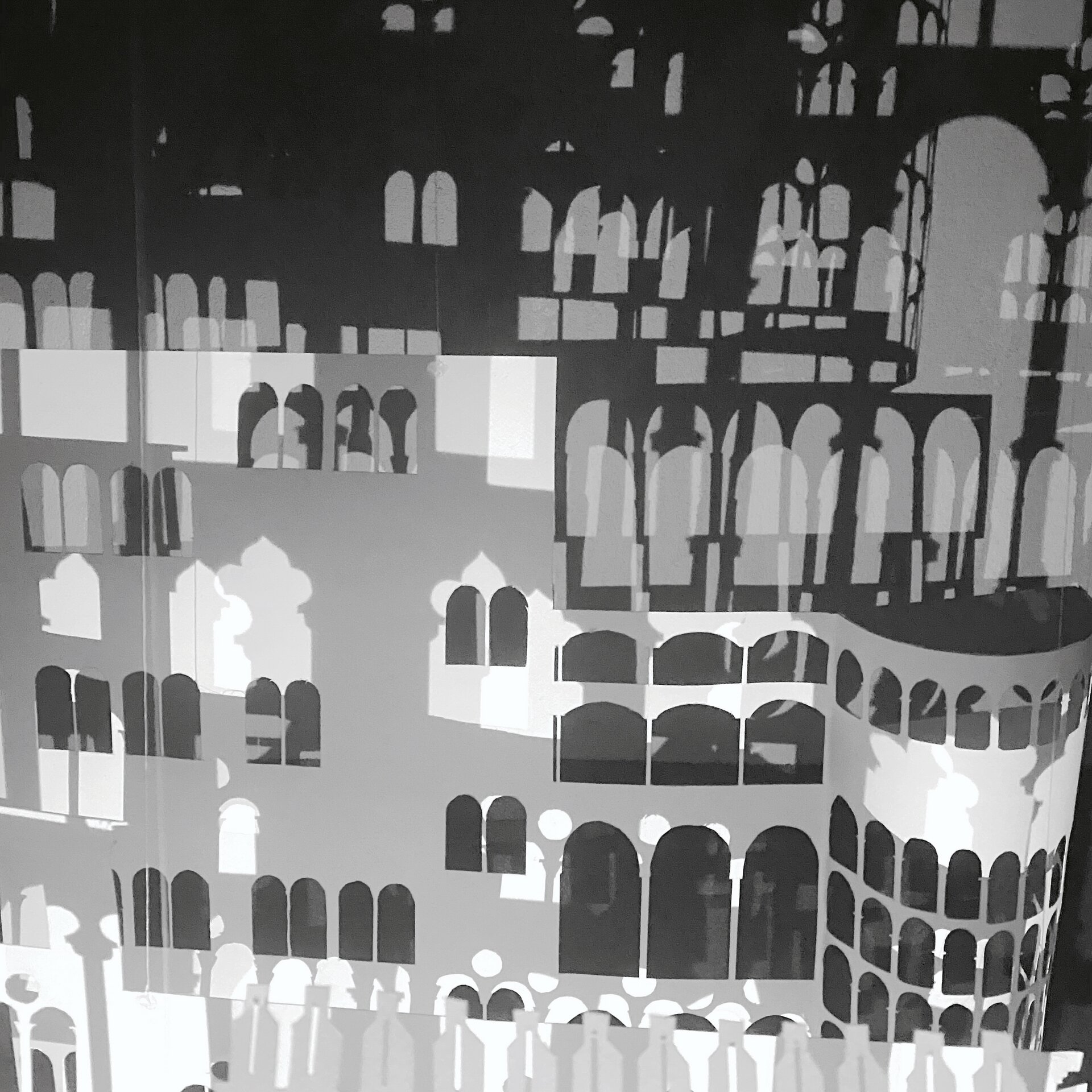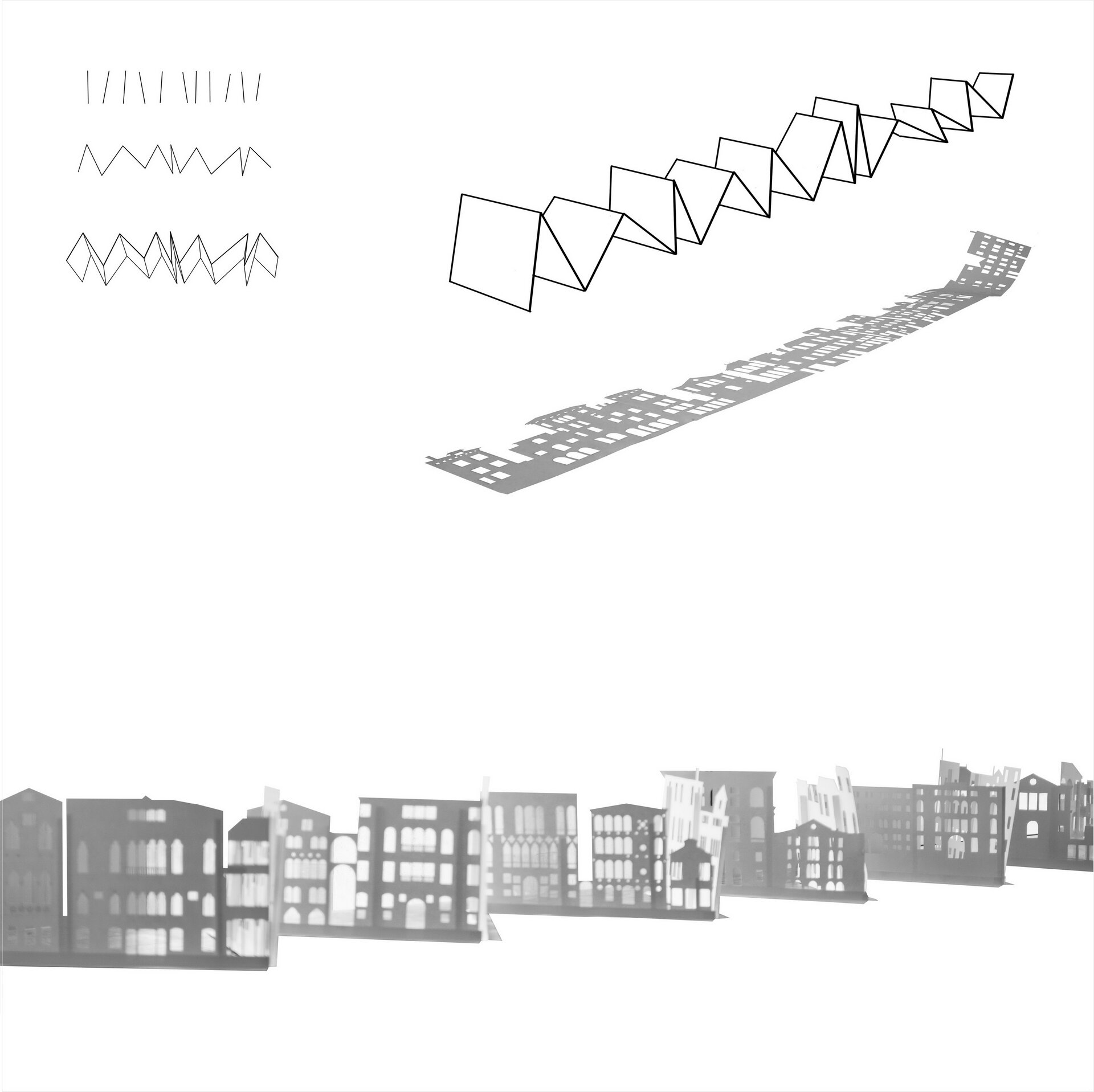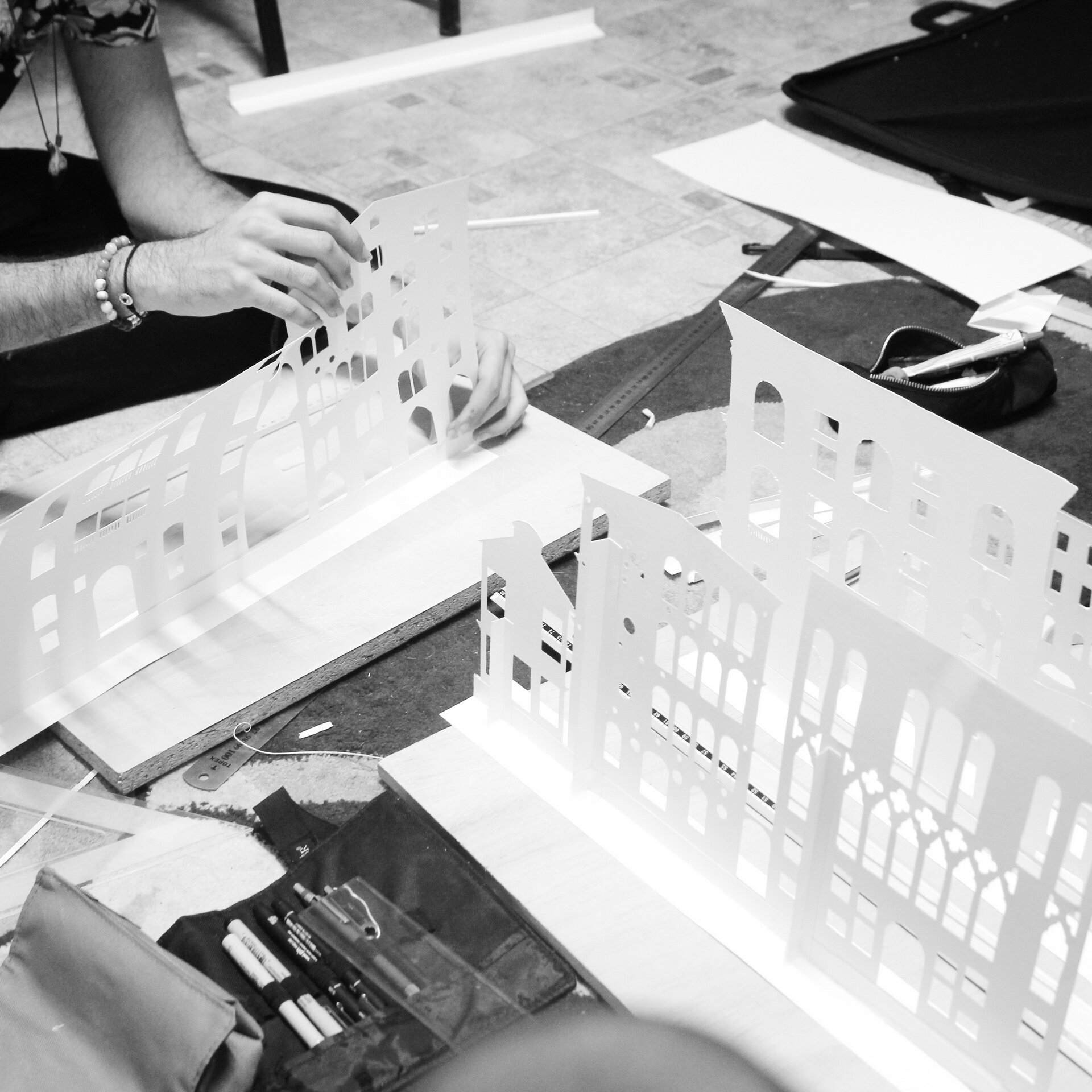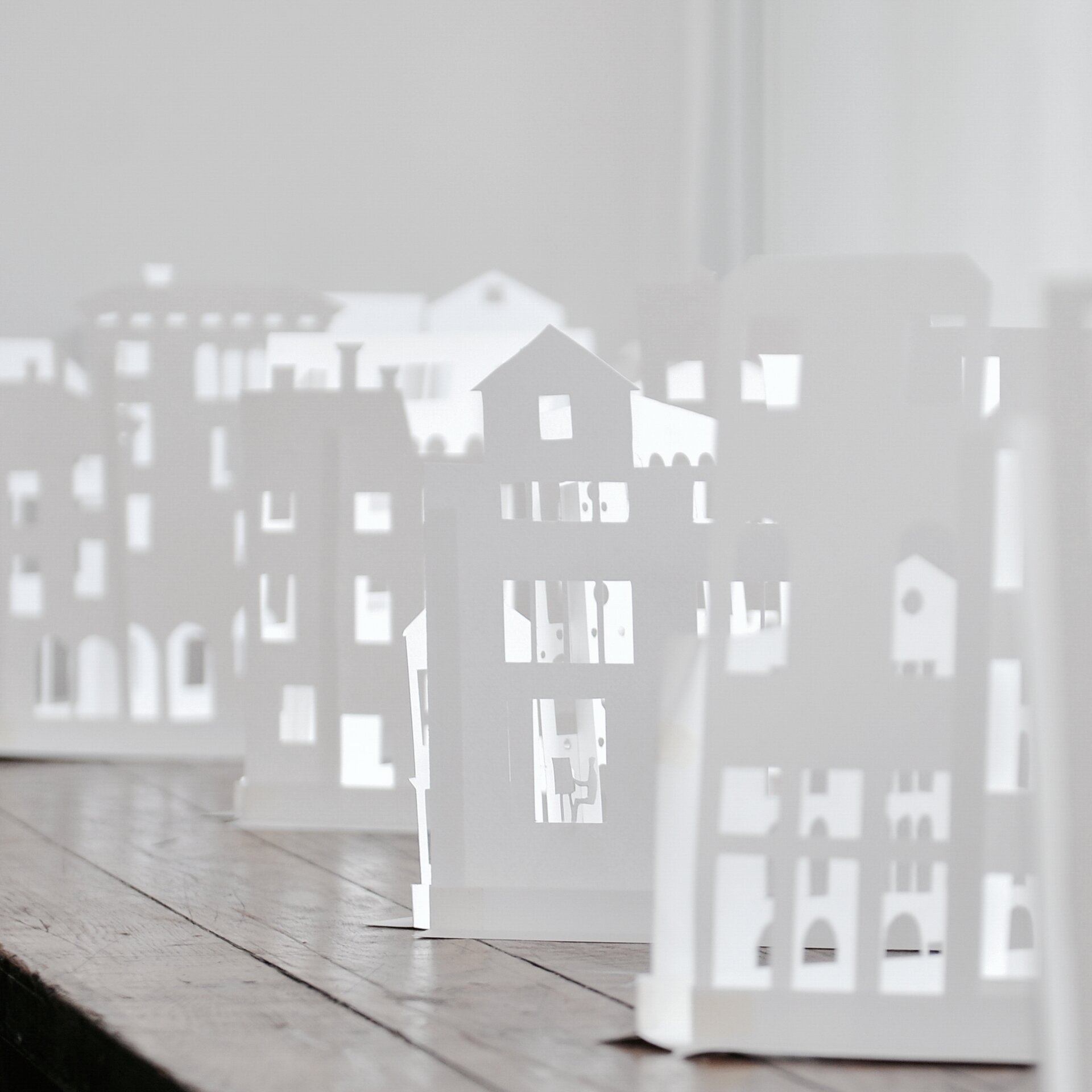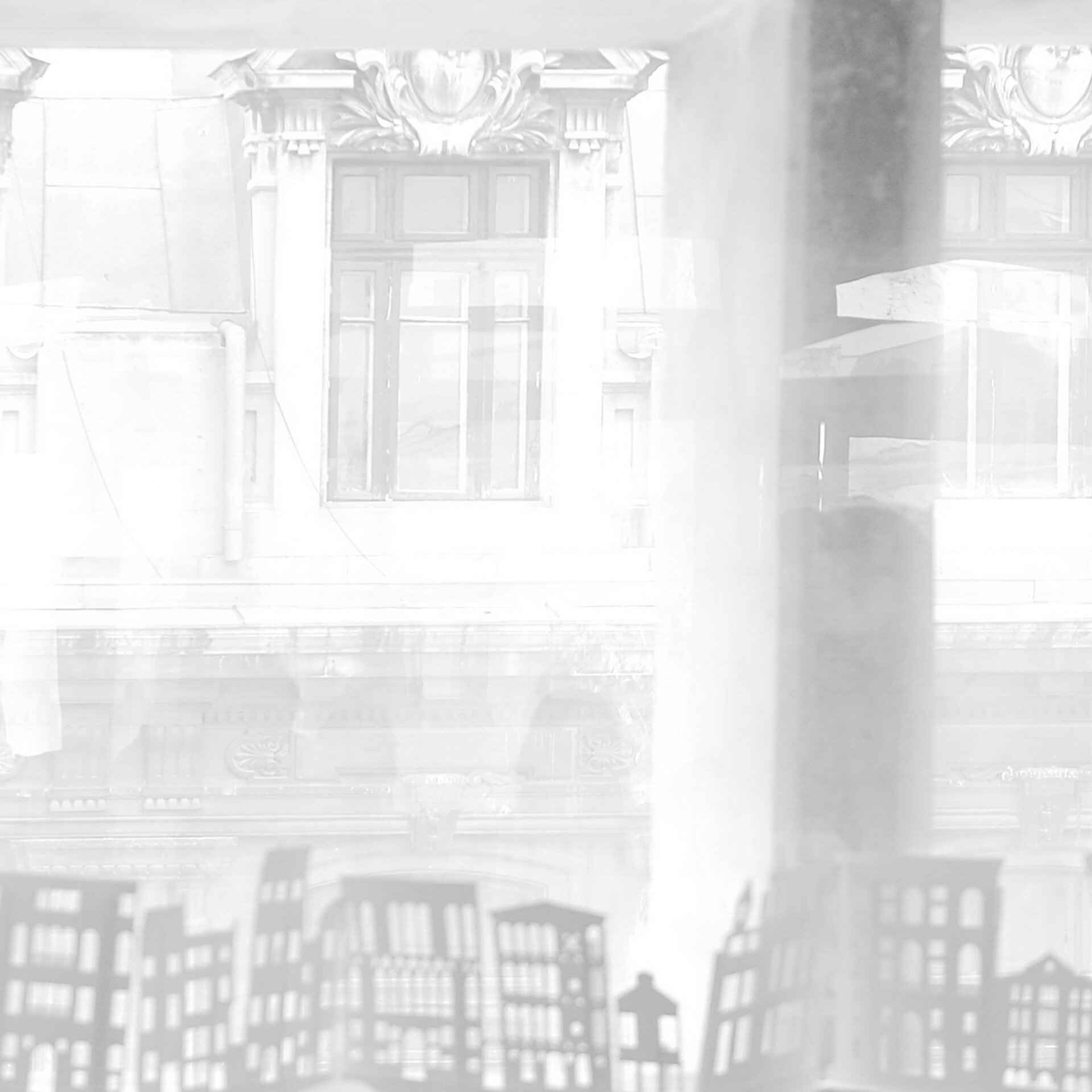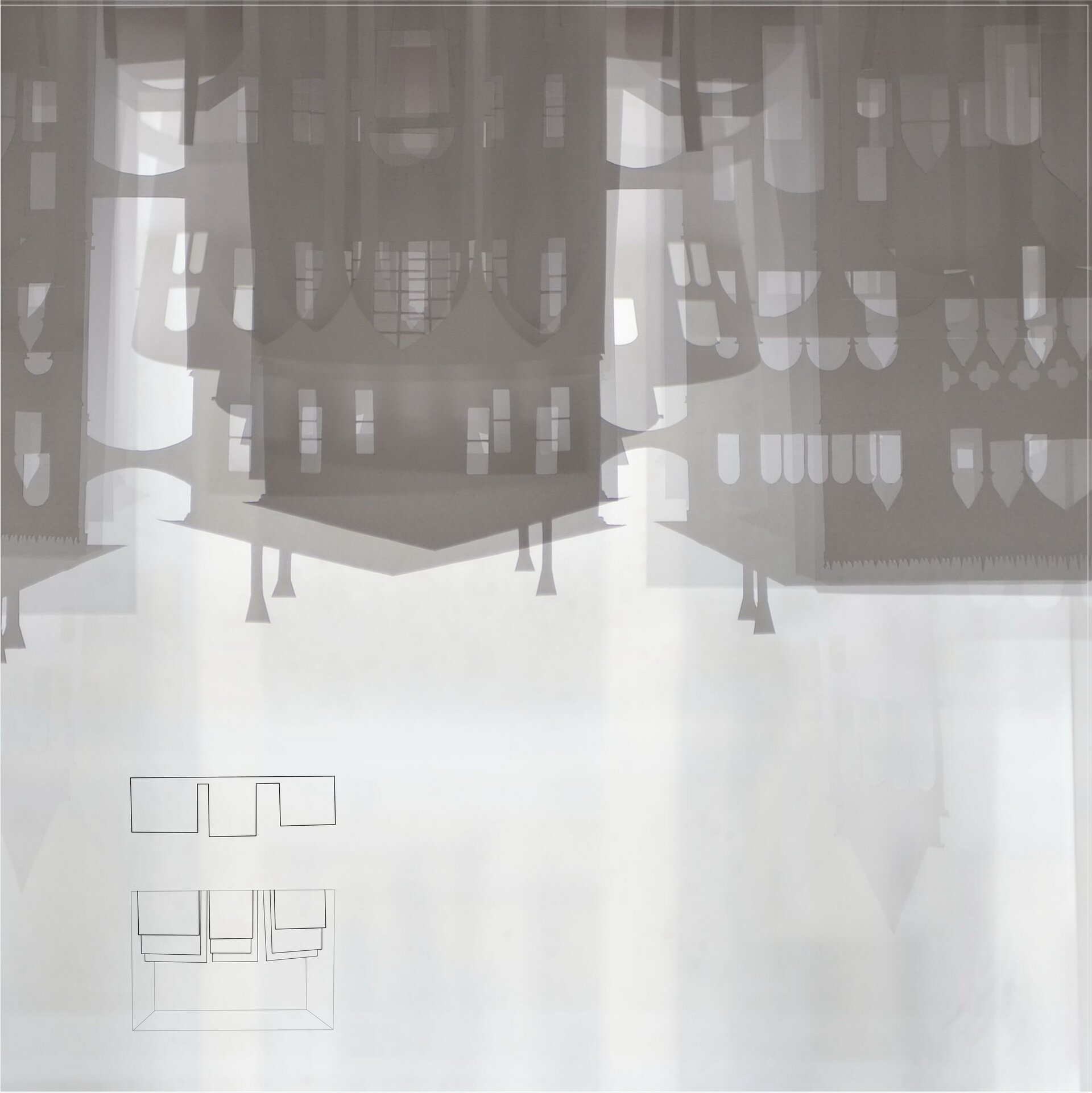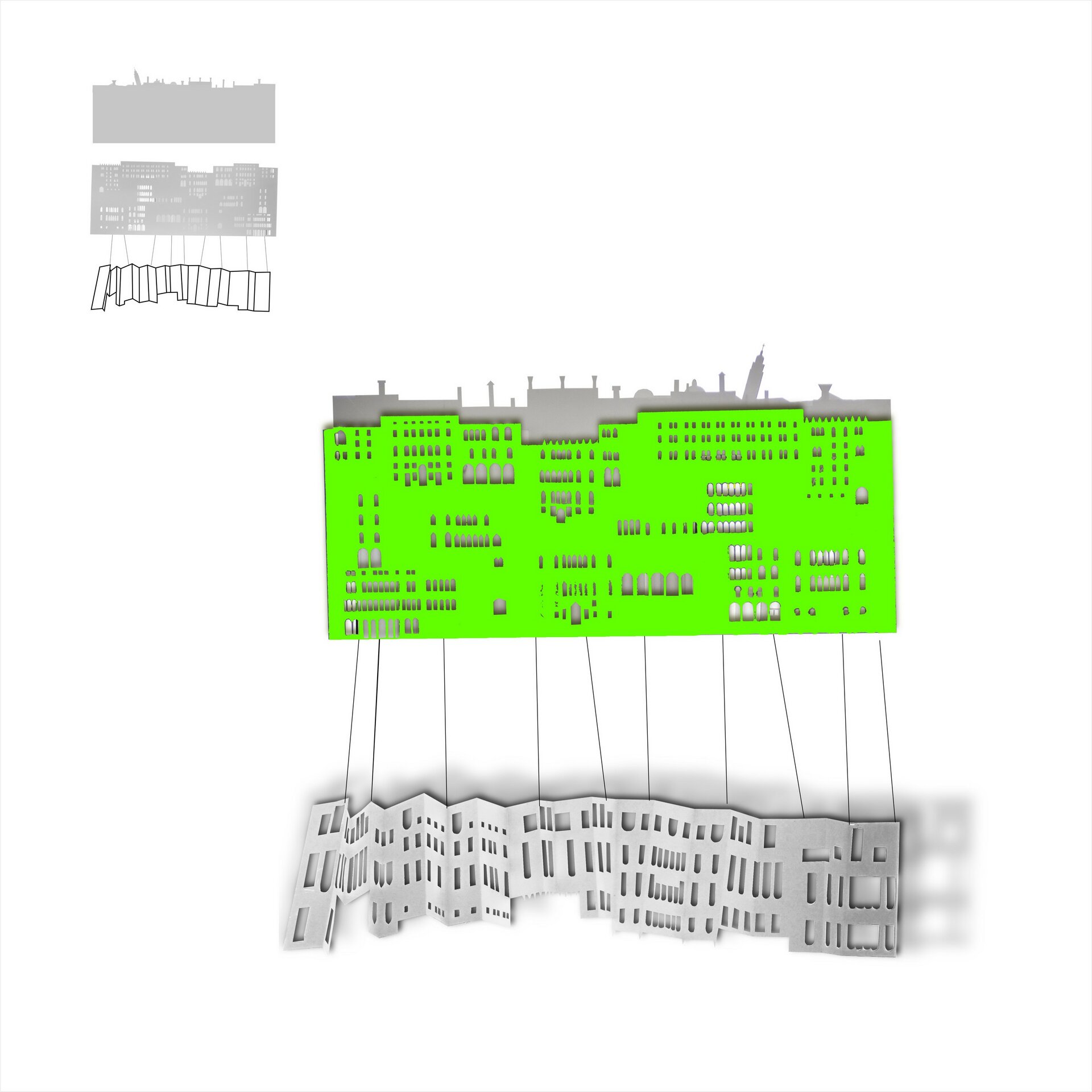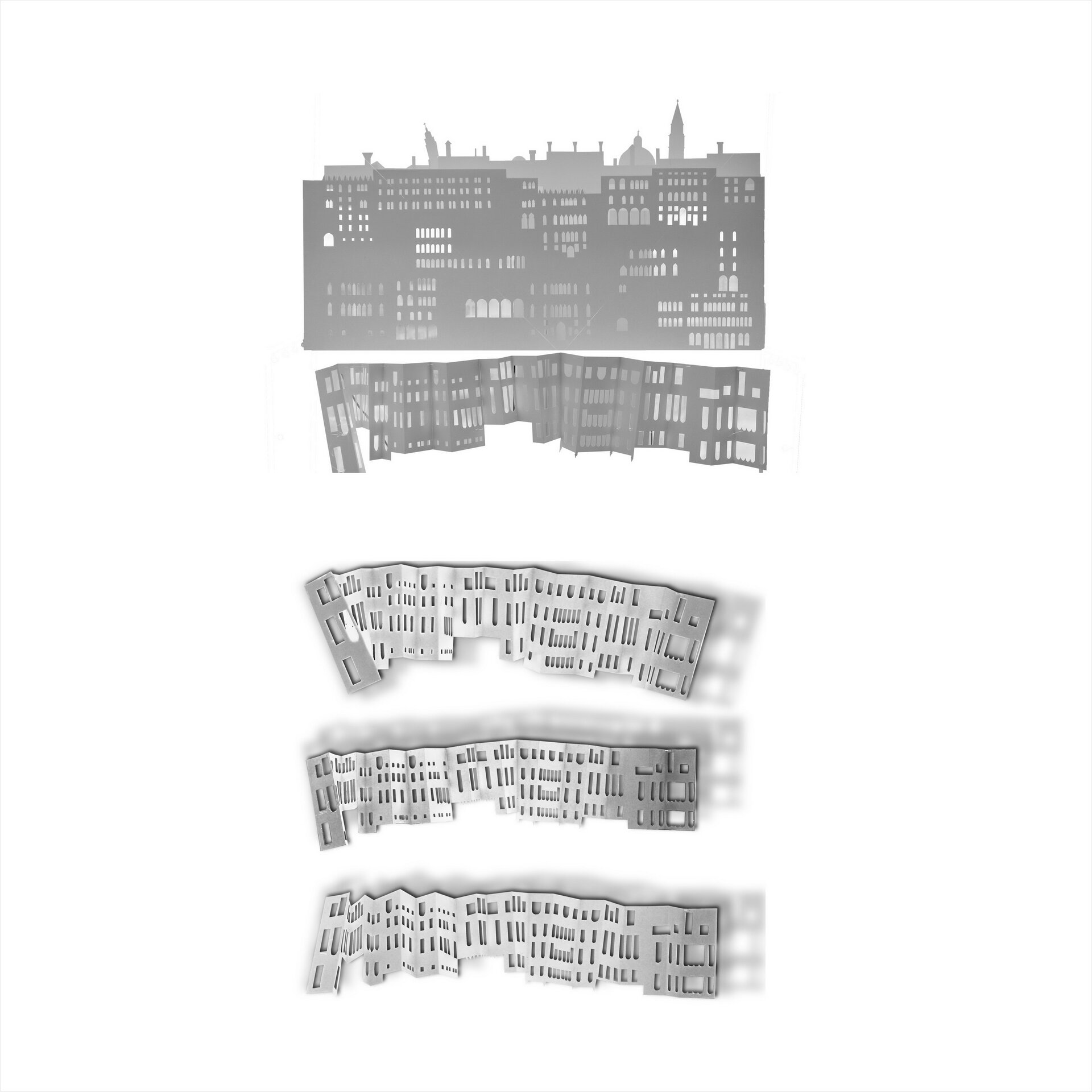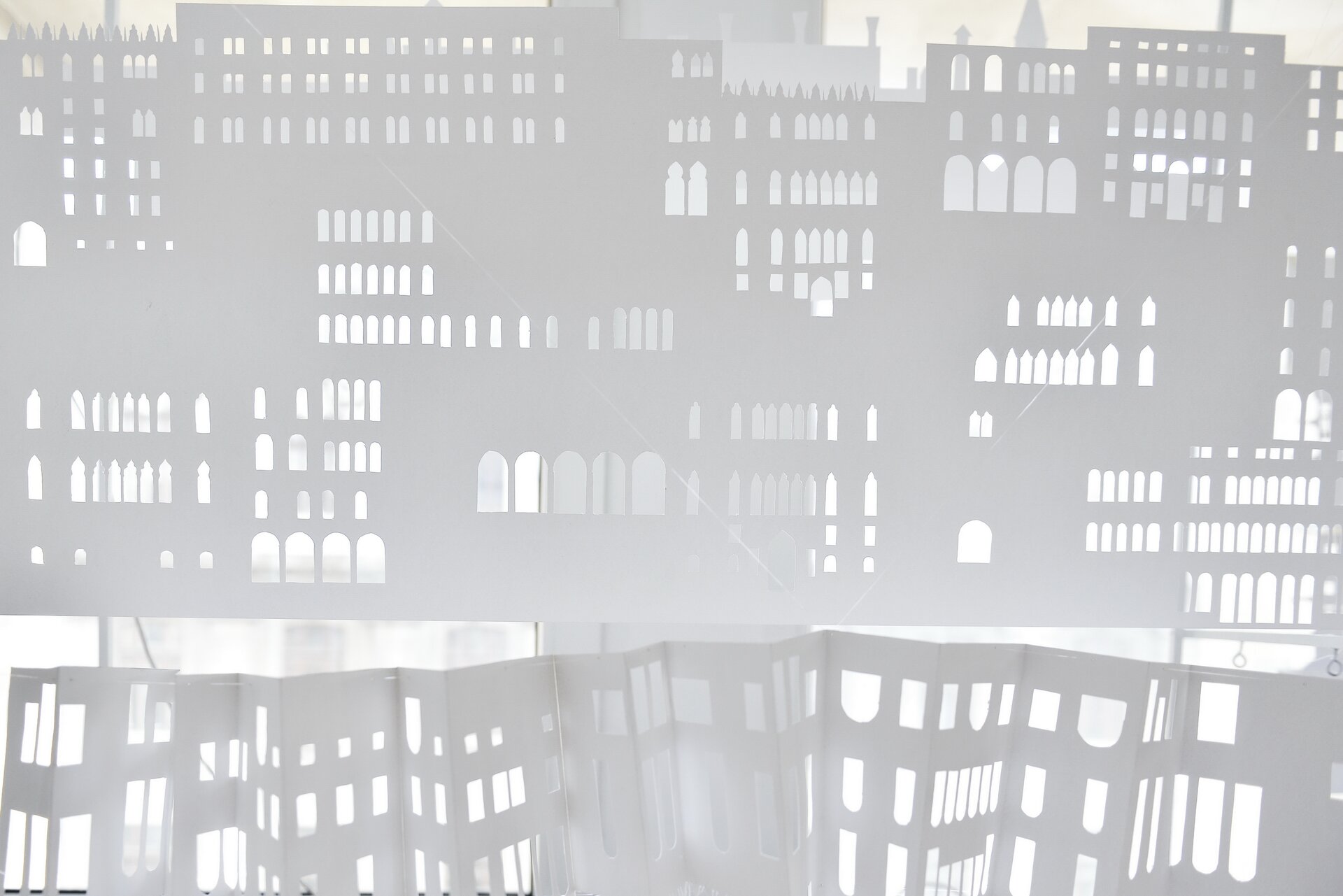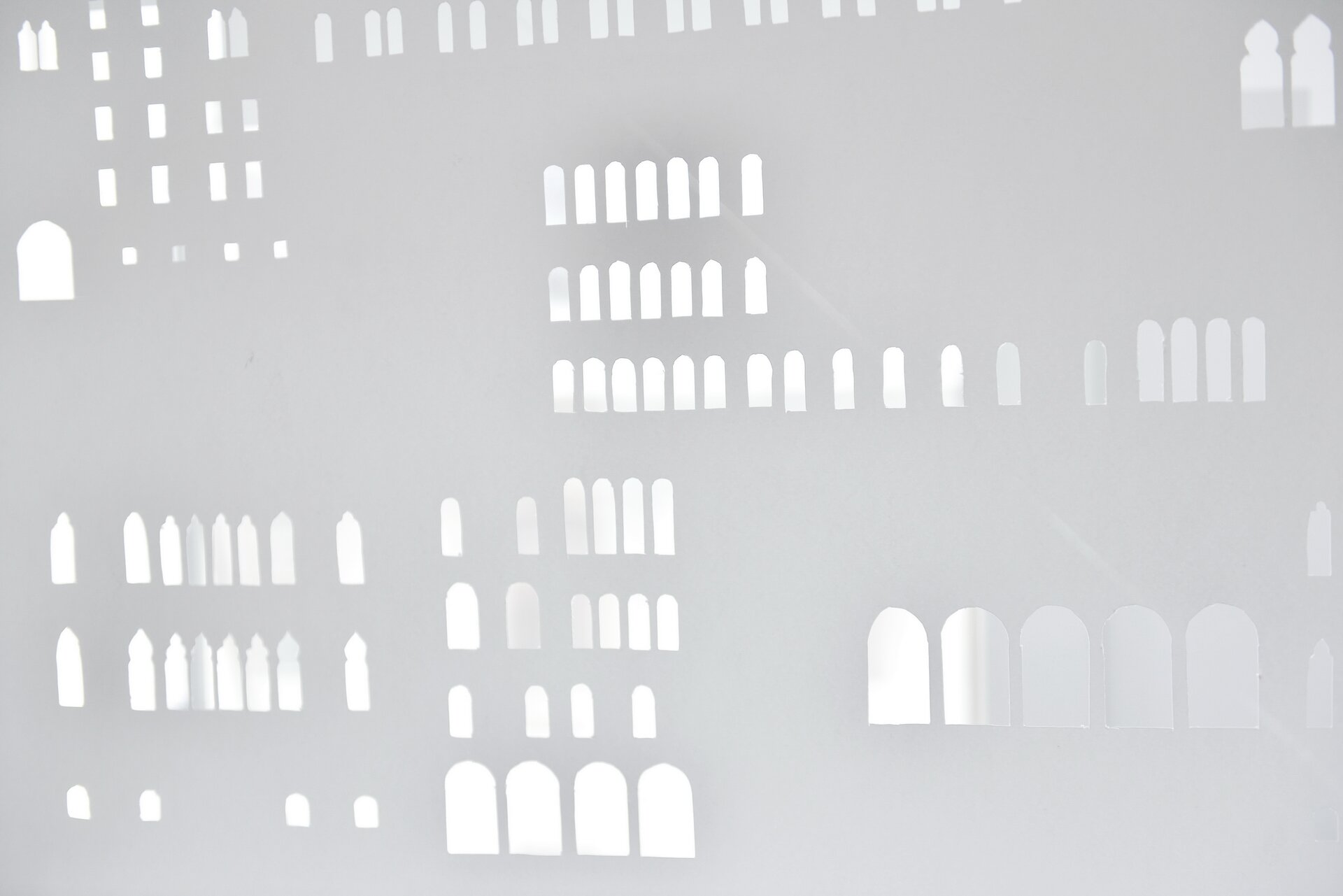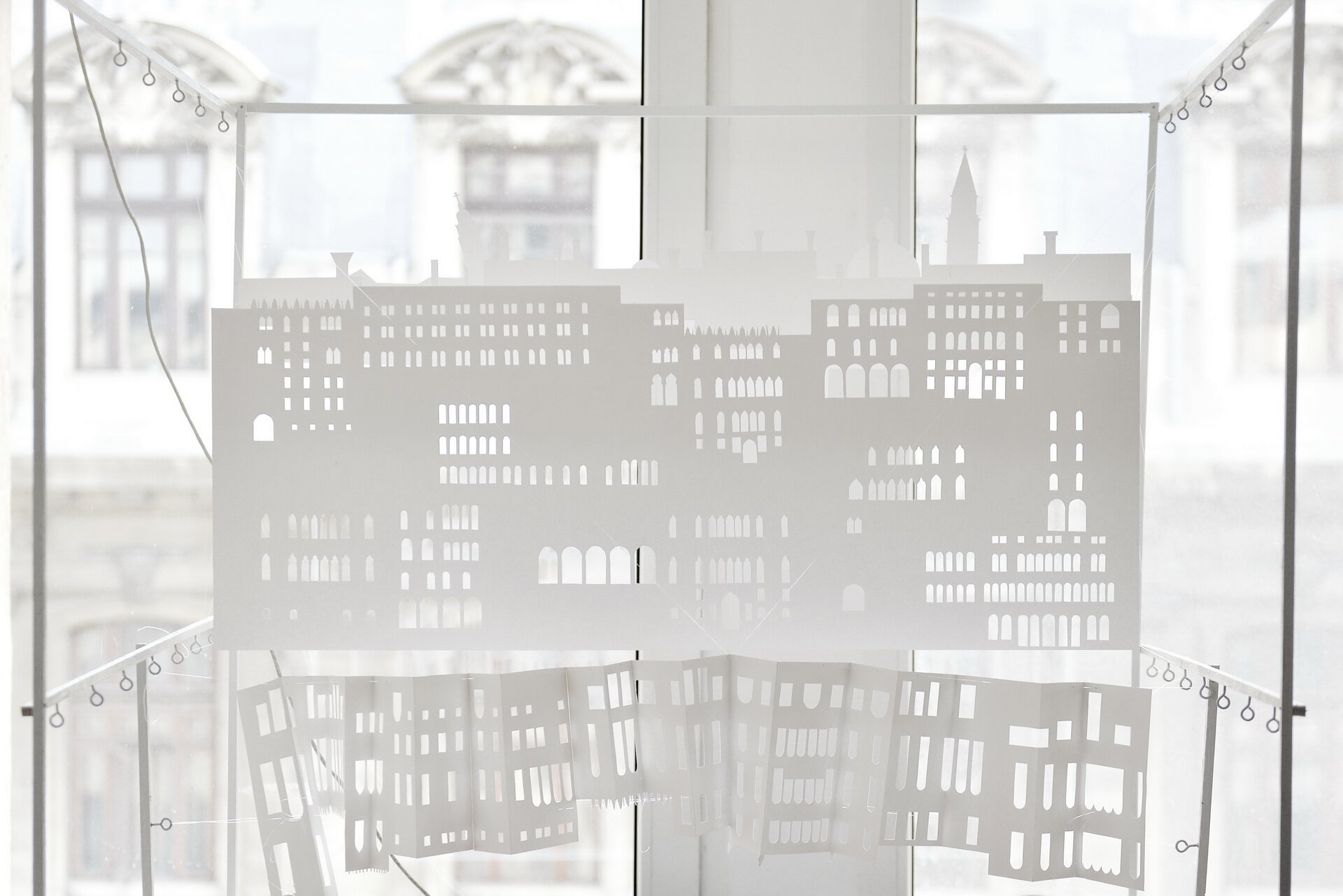
In-Visible Venice - An architectural comparative journey thru Italo Calvino's projections
Authors’ Comment
Intro:
“With cities, it is as with dreams: everything imaginable can be dreamed, but even the most unexpected dream is a rebus that conceals a desire or, its reverse, a fear. Cities, like dreams, are made of desires and fears, even if the thread of their discourse is secret, their rules are absurd, their perspectives deceitful, and everything conceals something else.” (Italo CALVINO, Orașele Invizibile)
Teaser:
"Venice... paradise of romance at the beginning of the century, a place of dreaming defined by the mist that rises from the waters, by the canals that cross it, by the continuous hustle and bustle of San Marco, by the bridges that connect the labyrinth of winding streets, by the squares people sitting at cafes, an anthill that chaotically superimposes apparently repetitive, sequential, fleeting images... A city of strong contrasts, of hidden romanticism, of silhouettes emerging from beyond the waters, of transparencies, of overlaps... sometimes of decadence, of sensations acute, of miasma, of pestilence. A city where you can find fragments of Wordsworth, Byron, Keats, Shelly, Poe or touches of Turner, Gericault or Goya. An impressive show, an amalgam of elements that can compose and recompose at any time a new, personalized, unique story. Hidden from view, the (in)visible Venice continues to live beyond a specific time. Italo Calvino descriptively imagined the invisible cities embodying Venice in each of them. Starting from key passages from the short story of I.C. it is proposed to find in situ the corresponding architectural fragments, to identify a common architectural vocabulary. It becomes the basis for the reconstruction of an invisible Venice in paper models, a Venice of shadows, light and fog. The workshop aims to identify repetitive vocabulary elements and transpose them into an architectural language that can spatially determine new interpretive stances." (A.C., In-Visible Venice, 2022)
Main theme:
In-Visible Venice - An architectural comparative journey thru ITALO CALVINO's projections is a thematic workshop that centers VENICE, in situ analysis, during two weeks discovering the architectures that inspired the novelist. Structured in 2 parts, the workshop has an analysis part in the serene city and respectively an applied part modeling paper models with the aim of recreating "invisible" architectures from shadows and lights.
The road follows the course of Venice, starting from the particular aspects of the fantastic cities. Following the descriptions of Italo Calvino the architects in training aimed to rediscover the cities (Diomira, Isidora, Doroteea, Zaira, Anastasia, Tamara, Zora, Despina, Zirma, Isaura, Maurilia, Fedora, Zenobia, Zobeide) based on repetitive characters/elements.
The applied part of the workshop starts from the supposed impossibility of illustrating the book Invisible Cities. Under the broad theme of paper models, the objective was to recreate some architectures from the shadows, some architectures that are invisible, ephemeral, in motion... an illusion, similar to the (fragmented) architectures recalled with the passage of time.
Behind the workshop hides an exercise in visualizing planes and their relationships with light, an exercise that manipulates fullness and emptiness in relation to the light source and movement. A series of references were essential in approaching the exercise, directly related to the theater world, through the play of lights and shadows, because ultimately, Italo Calvino's world is a theatrical, timeless world, highlighted by repetition and multiplication, by movement.
The world conceived by the prose writer (Italo Calvino) is essentially a world built with few but repeated elements, obeying Gilles Deleuze's theory of Repetition and Difference, which emphasized that differentiated repetition can become the substance of architecture. Similarly, in the invisible worlds, it is the repeated architectural elements that give the specific character of cities: cities built mainly of towers, bridges, walls, stairs, windows, doors. As a result, the workshop was constituted as a game with elements, able to compose and recompose through repetition a specific architectural typology.
The play of light and shadows in the NOH theater was in context a mechanism of amplification and manipulation in the desired direction. The scenic architecture perceived as a shadow is borrowed from the Commedia dell'Arte, becoming a character in itself, an architecture that moves, grows, decreases, transforms, paradoxically based on improvisation. Some essential references from the theater of light and shadows oriented applied study: Robert (Bob) Wilson, Jerzy Grotowski, Ariane Mnouchkine are a few directors who were inspired by conventional theater... operating unconventionally. Similarly, this way of working was an example of applied exercise aimed at encouraging creativity and associative thinking.
Educational method (non-formal education):
The formation of an "all-seeing" architect, including invisible things. An Applied Study of Italo Calvino's Invisible Cities.
The methodology goes through the definition of the stages of the aesthetic process, the principles of creating architectural maps and defines referential models. During the on-site study days, the lectures go from large scale to small scale: urban tissue morphology, spatial scenography, typologies of markets and the relationship between built and unbuilt, circulations, the mechanics of volume composition, the composition of facades, architectural morphology: composition of facades, typologies, etc. The individual and team exercises in situ aim to familiarize with the elements of architecture, to develop the recognition of vocabulary elements, starting from the quotations from the work of Italo Calvino.
The analysis resumes the stages you go through page by page, advancing into cities of life, of death, of the ugly, of the beautiful - it reconstructs the distinct typologies of the observed as the basis of the route and relates the distinct steps of assimilating the specific categories of the observed objects. The key to the aesthetic process is contained in the identity of the object observed, assimilated by borrowing or memorized and its recreation in a new interpretive key. The main goal is to reconstruct the city construction process, based on the identified determining elements. By orienting assimilation based on the process of seeing, observing, imagining, it is desired to direct the educational process towards an active assimilation and a responsible development of the creative capacity of future architects.
The educational process aims at identifying and assimilating the mechanisms of composition and decomposition of the primary constituent elements of the architectural space. Within the exercise, the following are highlighted: observation, decomposition of the existing, recomposition by association aiming at the mechanisms of volumetric composition: the typology of agglomeration (the tower of Babel), folding (harmonic), multiple projections or inverted projections (mirroring, reflection and multiplication, highlighting the depth through multiple layers etc.)
The applied study is thus constituted as a story of the famous initiatory road (Le Corbusier), a story with roots in the past and reflexes in the present, a story of the architectural object seen beyond the temporal belonging of the observer. Time travel is simultaneously a dialogue between emerging architects and Italo Calvino, and a story - a story of creative adaptation and progression of imagination (imaginative composition).
1,319 / 5,000
Translation results
Program: WORKSHOP – IN-VISIBLE VENICE 2022
Discipline: architecture, visual art
Credits: equivalent to practical study year 1,2
Workshop participants, 41 architect students: ANGHEL Alexia Maria, BACIU Andreea Cristina, BEJAN Mara Ruxandra, BÎRSAN Alexandru Vlad, BUDACU Sandra Ana, CĂTONOIU Sinziana, CEACIRU Alexa Daniela, CHEțU Maria Teodora, CHIRIȚ, Ioana Ruxandra, CRISTIAN Andra, CUCU Adriana Theodora, CUCU Teodora, CUSU Tina Teodora, DOLHA Mihaela, FLOREA Maria Bianca, GEREA Ana Maria Yasemine, ION Alexia Denisa, JIMAN Maria Ioana, LASCU Ioana, MARCOIANU Alexandra Bianca, MARCU Meltem Lavinia Maria, MĂRGEAN Elena Bianca, MOISE Sara Maria, MOţĂĂIANU Andrada Nicola , OPREA Smaranda Ana, OZKAN Oana Bianca, PALIE Andreea Theodora, PANGICĂ Dan Paul, PÎRȚAC Antonia Olivia, POPA Andreea Florina, RADU Maria Alexandra, SĂNDESCU Ana Carina, SARIGHIOLEANU Mihnea Teodor, SILION Mihai Cristian, SIMION Maria, SORESCU Ioana Alexia, ȘTEFANESCU Miruna , TOMOZEI Ana Adriana, TUDOR Andra Nicole, TURCU Denisa, ZALTZIDLER Vanessa.
Duration: 1 week travel + 2 weeks workshop + 1 week editing
Typology: STUDY TRIP – WORKSHOP
Category: non-formal, multidisciplinary education, oriented towards visual culture
Location: Venezia, Bucharest
Purpose: paper models/ "PAPER ARCHITECTURE"; exhibition.
- OPEN Garage
- The „Bătător plus”
- Living Danube Limes
- Govora Heritage Lab
- Year One. First Year. Model / Vocabulary /Tools
- IMUAU Summer School. Schönberg 2022
- Tradition and tehnology. The digital documentation of the Ensemble of the Fortified Church of Dealu Frumos
- Pherekyde's Courtyard
- Water to wine
- Millipede
- Eliminating the median area between traffic lanes
- Football as Infrastructure of Democracy
- In-Visible Venice - An architectural comparative journey thru Italo Calvino's projections
- ELEMENTS - Sibiu Summer School 2022
